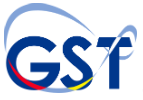This article relates to the Goods & Services Tax (GST) which was introduced in April 2015, but was subsequently replaced with the Sales & Service Tax in September 2018.
In the recently tabled budget, Prime Minister Datuk Seri Najib announced that Goods and Services Tax (GST) or Cukai Barang dan Perkhidmatan will be implemented from April 2015.
Under GST, businesses act as collecting agents for the government.
Businesses would be required to include GST on specific products and/or services when they invoice their customers.
GST collected from sales would have to be remitted to the government on a periodical basis, with the current requirement being quarterly.
Businesses would also pay GST on specific products and/or services that they buy.
Such GST paid on purchases can be claimed or offset against any GST collected on sales.
It should be noted that some goods and/or services are either exempt from GST or zero rated.
For zero rated, although no GST is collected, a business would still be required to report this.
GST Registration requirement
The current ruling for GST is that businesses with turnover of RM500,000.00 or more are required to register for GST.
Businesses that do not fall in this category can register voluntarily.
There are several things you need to do to get your business ready for GST.
Invoice format
Besides the standard details usually included on an invoice, with GST, the following are required:
Invoices must have:
- the words “Tax Invoice” on them
- the business GST registration number
- Each item must be displayed with the associated amount and GST amount
- The total amount excluding GST
- The total of GST for the invoice
Review your products and/or services
Check which of your products and/or services attract GST, and put in place a system to ensure that when you invoice those items, GST is included.
System to track GST
Unless the number of transactions is very small, you would need a proper system to keep track of GST paid and GST collected so that you can submit the required returns on a timely basis.
GST tax components
There are 2 parts to this that would need tracking:
Input tax
This is GST that your business pays when purchasing items.
Input tax can be recovered either by offsetting against GST collected (Output tax) or, if you do not collect GST, from the GST authority.
Output tax
This is GST that your business includes on sales.
Such GST would need to be remitted to the GST authority on a quarterly basis.
In accounting we would need to create a new account, either one for each, or, combine both into one account.
GST returns
On a quarterly basis, your business would have to prepare and submit a statement of GST paid and GST collected.
If GST collected exceeds GST paid, then this return should include payment to the GST authority.
If GST paid exceeds GST collected, then a claim for refund can be made.
GST returns must be submitted no later than the last day of the following month of each quarter.

